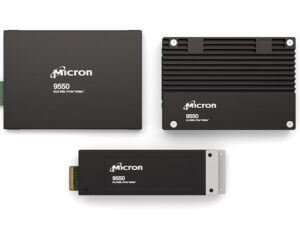Mergers and acquisitions make integrating IT systems complex, especially when following software purchase rules. Access is hosting a webinar focused on these challenges post-M&A. They know the importance of IT procurement compliance.
Top leaders will share their knowledge on preventing risks and keeping business going. They’ll underline the need for careful security checks. This becomes crucial as companies move from paper to digital records. The webinar will highlight ways to follow software buying rules better.
Putting together rapid response teams and a single IT plan is key for smooth transitions for bought companies. This helps avoid risks while meeting software purchase rules.
Key Takeaways
- Understanding the intricacies of IT procurement compliance during M&A.
- The critical role of due diligence in information security for software acquisition compliance.
- Adapting to digital systems and ensuring adherence to software purchasing regulations.
- The strategic importance of a unified IT post-M&A for seamless business continuity.
- How rapid response teams can assist in mitigating risks when facing compressed due diligence timelines.
- The value of continuous learning in the ever-evolving landscape of IT integration within M&A contexts.
Emphasizing Security in Software Acquisition Compliance
Buying software needs a keen eye on security from the start. Ted Kenney of Access points out how vital software audit requirements and software compliance management are. This is especially true when handling government data and meeting strict rules. In our digital world, having a solid security strategy is key. It protects an organization’s good name and keeps it in line with laws.
Moving to digital assets means asking tough questions and quickly changing how things are done. This is crucial for managing software assets well. Keeping an eye on security is baked into merging and buying businesses. It makes sure that security is a main focus at every stage.
Fostering strong security protocols during software procurement is a testament to an organization’s commitment to due diligence and risk management.
— Ted Kenney, CIO of Access
As technology moves forward, facing rising cyber threats and complex rules is a big deal. This calls for strict software audit rules, better software asset management, and strong software compliance management. These steps don’t just stop damage to a company’s reputation. They also help companies deal with merges and acquisitions wisely and honestly.
Software Acquisition Compliance: Assess and Integrate IT Systems
In mergers and acquisitions, tech plays a huge role. Software vendor management becomes critical here. IT leaders must examine and merge different IT systems carefully. They focus on software license rules and combining platforms smoothly.

Merging two IT systems is like solving a puzzle. Sometimes, the tech of the company being bought is better. The first step is crucial. It makes sure license rules are followed in the merger. This phase ensures a safe and united tech environment.
| Integration Phase | Focus Area | Relevance to Compliance |
|---|---|---|
| Initial Assessment | Risk Management and Cybersecurity | Addresses potential vulnerabilities in software and infrastructure. |
| Strategy Development | Software Vendor Management | Ensures vendors meet licensing requirements and IT standards. |
| Policies and Education | IT Procurement Compliance | Establishes consistent procurement protocols across the merged entity. |
| Integration Execution | Infrastructure Consistency | Implements integrated systems while maintaining compliance. |
A step-by-step approach is essential for success. Good project management looks after both current and future needs. Also, communication is key. It helps in reducing mistakes and improving security. It integrates software vendor management into the company’s culture.
“The seamless integration of IT systems post-acquisition is as much about technology as it is about people. Effective communication and thorough education on new processes ensure software licensing compliance becomes part of the enterprise culture, not just a checkbox,” explains an industry expert.
The path to a successful merger involves many steps. It focuses on IT procurement compliance. This ensures the company remains secure and efficient. Thus, it writes a success story in the world of software acquisition compliance.
Optimizing Software Vendor Management for IT Procurement Compliance
Getting software is about more than just ticking a box. It’s about creating a win-win relationship with software vendors. This relationship leads to growth and sticks to the rules. A smart approach to handling software assets makes operations smoother. It also makes an organization’s stance on following the rules stronger. We will look into the best ways to deal with software vendors.
Evaluating Vendor's Reputation and Support
The base of a good vendor relationship is their reputation and support level. Organizations should look into the vendor’s past. They should check customer reviews and how well the vendor has done before. This helps to pick vendors that are reliable and excel in their field. Doing your homework keeps you safe from future problems. It also matches your long-term goals for getting and using software the right way.
Understanding Vendor's Commitment and Roadmap
It’s important how long a software solution lasts, not just how it starts. Asking about the vendor’s future plans is key. Knowing their update schedule and how the product will grow is vital. This ensures the software meets your needs now and in the future. It also helps in managing your software assets well.
Negotiating Favorable Software Licensing Agreements
Negotiating software licenses is crucial for following IT procurement rules. It’s important to think about legal stuff like terms and conditions. This can prevent problems later. Companies should aim for deals that are good but fair. This helps save money without giving up on software quality or features.

By following these tips, businesses can stay on the right side of the law. They also make their software buying processes better. In the IT world, things change fast. A smart and all-around approach to managing software vendors keeps you ahead. It helps your business succeed.
Best Practices in Software Compliance Management
In today’s fast-paced world, managing software compliance is crucial. It’s not just checking boxes. It’s about dynamic practices that protect an organization’s integrity and efficiency. Three key elements are vital. They help align software systems with the company’s goals and meet tough industry standards.
Developing a Software Asset Management Strategy
Having a strong software asset management strategy is key to compliance. This strategy should cover tracking licenses and comply with purchasing rules. It also involves allocating IT resources well. Good management cuts financial waste and helps unify different systems. This supports business processes and meets compliance needs.
Conducting Regular Software Audits to Meet Requirements
Regular, detailed audits are essential in software compliance management. They ensure ongoing alignment with vendor and security requirements. Audits identify shortcomings in licensing, usage, and compliance. This proactive approach helps companies fix problems early. It avoids legal or financial trouble. Regular audits offer stability in the digital world.
Implementing Training for Ongoing Compliance
Training employees is key to a solid compliance framework. It creates an environment where staff know how to use new systems and follow rules. This way, compliance becomes a collective responsibility. Education promotes a culture aware of compliance’s importance. It helps understand and value software’s role in maintaining compliance.




